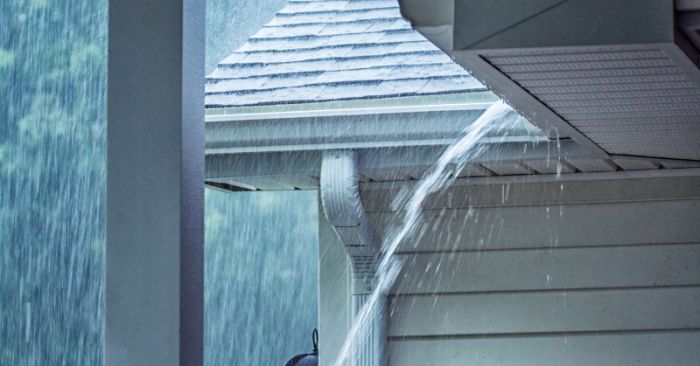If your house isn't well equipped, extreme weather events could result in great destruction. Although many homeowners are concerned that making their homes storm-proof would entail significant expenditures or extensive renovations, in reality, tiny, proactive steps may do much to safeguard your house.
Preparing for possible weaknesses will help you lower the hazards and protect your home. You can act on the guidance in this manual to make sure you are prepared when harsh weather invades, using practical advice and techniques.
Inspect Key Areas of Your Home
Understanding your house's present state is the first thing you have to do in getting it ready. Look carefully at regions most open to the elements. Begin with your roof and check for visible cracks, loose shingles, or sagging portions that would let water seep inside. If left unchecked, even small roof damage can cause major problems.
Second, evaluate your doorways and windows. During a storm, weary seals, tiny gaps, or flimsy frames can permit wind and water entrance. A cost-effective, straightforward means of increasing protection is to change weatherstripping or include caulking. Identifying and addressing these issues now will help you get ready for the next storm season before it begins.
Strengthen Your Roof and Gutters
During severe weather, your house's first line of safety is your roof and gutters. Avoiding water damage depends on making sure these elements are in good shape. Regularly clean out gutters to avoid clogs that could result in rainwater spilling over and pooling near your foundation. Standing water can cause structural damage or flooding over time.

If you live in a region susceptible to strong winds, think about using clips or hurricane straps to fortify your roofing. By fastening the roof to the walls with these basic installations, one increases its resistance to high winds. To lower your house's susceptibility to storms, make sure your gutters and roof are in top condition by means of routine maintenance and sometimes professional inspections.
Reinforce Windows and Doors
Doors and windows open most storms' opportunities for water and wind. Consider fitting storm shutters or replacing glass with an impact-resistant alternative to defend your house. Especially useful in communities often struck by hurricanes or strong storms, these answers give extra resiliency.
Either way, don't ignore weatherproofing. Seals around doors and windows can degrade over time, letting in humidity. Upgrade outdated weatherstripping and guarantee every frame is tight to give a tighter seal. Another line of defense is provided when doors are reinforced with metal brackets and longer screws in hinges, therefore protecting your house from the elements.
Reduce Flooding Risks
Although flooding is one of the most disastrous consequences of severe weather, taking a few measures can greatly lower its impact. Start by patching your foundation's cracks or holes since these are typical water entrance points. Ensure your house's foundations are intact by using waterproof caulking.
Install a sump pump to eliminate water fast if your basement is in danger of flooding. Even during power outages, a battery backup ensures the system is operating. Furthermore, off the ground, raising devices, including water heaters and HVAC systems, can help to stop expensive damage should water intrusion happen.
It could be wise to install flood vents or barriers for houses in flood-prone regions to reduce foundation stress from strong storms. Significant future repair costs can be avoided by these simple actions.
Prepare Your Outdoor Spaces
Your yard helps greatly to shield your house from damage caused by storms. Start with tree trimming and cutting off any low or weak branches that could fall during strong winds. Healthy trees should even be examined to guarantee their limbs are not too close to your windows, roof, or power lines. Moreover, store outside items such as patio furniture, grills, and potted plants securely to keep them from flying about violently during a storm.
Preparing for extreme weather also calls for another significant action: enhancing your yard's drainage. Water pooling close to your foundation resulting from bad drainage might induce soil erosion or water seepage, damaging the integrity of your home.
Using permeable pavers or adding gravel helps to efficiently guide water off your premises and reduce these hazards. Inspecting fences and other outside structures for free or damaged sections will prevent them from being dangerous during powerful storms. This time should be taken into consideration.
Plan Ahead for Emergencies
A dependable contingency strategy is crucial for storm season. First, gather a manual can opener, non-perishable food, water, a first-aid kit, batteries, and flashlights. Include any needed medicines and important documents in waterproof containers and pet treats if appropriate. Having everything in one convenient place simplifies fast action when extreme weather is close.
See to it that everyone in your home is conversant with the emergency strategy. Should the worst happen, instruct the family on how to cut off services such as water, natural gas, and electricity. Designate duties for young children or pets and find the safest spot in your house to seek cover during a storm. Preparing ahead of time helps your family stay calm and prepared in the event of severe weather.
Review Your Insurance Coverage
Being financially prepared is crucial when you get ready for a storm. Examine your homeowner's insurance plan to know what it covers and whether more coverage, such as flood insurance, might be warranted. Since many plans rule out some forms of storm damage, rectifying gaps in coverage will spare you unanticipated costs.
Document your possessions visually or with pictures and catalogue them. This record will streamline the claims process and guarantee you get the right payment should a storm occur. Protecting your house calls for financial readiness as well as physical preparations.
Conclusion
Although severe weather could present great difficulties, you can guard your home and family with appropriate precautions. You will be better prepared to tackle whatever the next storm season throws at you by reviewing and strengthening weak points, lowering flood risks, and planning. Taking small steps now can significantly affect your future and help you to calm down when the weather becomes drastic.
Post Comment
Be the first to post comment!
Related Articles




